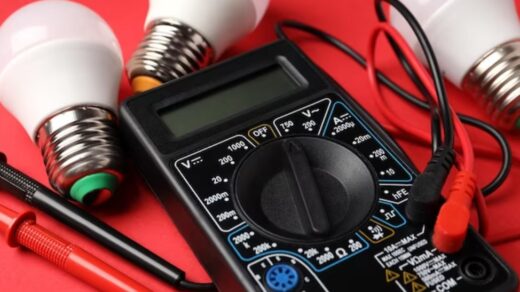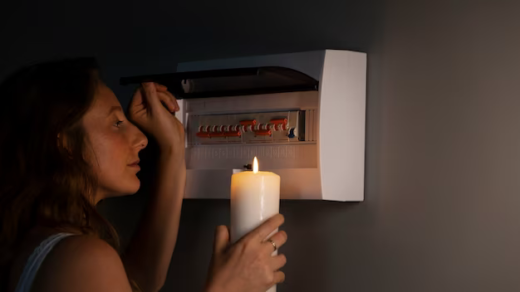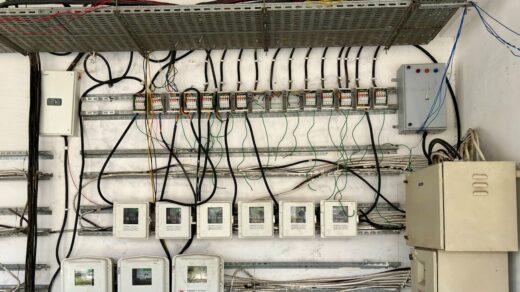Table of content:
- The Essential Toolkit for Electrical Testing;
- Frayed Wires: A Visual Assessment;
- The Importance of Outlet Grounding Tests;
- The Problem of Loose Plugs;
- Recognizing a Defective Electrical System;
- The Need for an Electrical Overhaul?;
- In Conclusion.
In contemporary homes, the electrical system is paramount. However, like any other system, malfunctions can arise, leading to hazards and inefficiencies. Alarmingly, there are over 50,000 electrical fires causing more than 500 deaths annually. This piece offers insights into circuit testing and spotting electrical problems.
The Essential Toolkit for Electrical Testing
Before diving into testing, it’s crucial to select the appropriate tools. There’s a plethora of devices suited for outlet testing such as non-contact testers, continuity testers, and voltage analyzers. They are generally affordable, each boasting distinctive features. This discussion will center on the multimeter.
Multimeters are multifunctional tools apt for various tasks, from testing AC/DC circuits to gauging voltage and current. While they’re widely available and cost-effective, the quality can differ across brands. Mastering a multimeter’s diverse functionalities might demand some patience. However, for outlet testing, they stand out for their versatility. Safety is paramount. When using a multimeter, grasp both metal ends with a single hand to minimize electric shock risks. Always insert the probes into the neutral slot before the live one and avoid letting the tips touch. Sparking is a warning sign, necessitating a professional electrician’s intervention.
Frayed Wires: A Visual Assessment
Damaged wires aren’t just a mere inconvenience; they’re a ticking time bomb within a household. Over time, these wires can fray and wear out, becoming potential fire hazards or shock risks. Pests, especially rodents, can gnaw on cables, while inadequate installations can lead to exposed wires or faulty connections.
- The introduction of the NEC’s tamper-proof outlet requirement underscores the importance of evolving safety standards in electrical installations. With increasing reports of curious children getting injured by poking objects into electrical outlets, the protective barriers in these tamper-proof designs have become indispensable. The beauty of these outlets is their simplicity — their design inherently prevents the insertion of unsuitable objects. Hence, homeowners don’t need sophisticated tools like a multimeter to assess their effectiveness.
But, like all systems, there can be oversights or wear and tear. If homeowners find their outlets missing these essential barriers or have other electrical concerns, it’s crucial not to resort to DIY fixes. Instead, seeking professional guidance is the way forward. In Seattle, Brennan Electric stands out as a beacon of expertise, ready to ensure that every home’s electrical system is up to par and safe for all inhabitants.
The Importance of Outlet Grounding Tests
Grounding is a cornerstone of electrical safety, especially in today’s world where our homes are filled with a plethora of electronic devices. Essentially, grounding provides an alternative pathway for electrical currents to travel safely to the ground, ensuring that any unforeseen surges don’t pose a risk to humans or devices. This fundamental mechanism acts like a safeguard, diverting potential hazards and ensuring that our homes remain safe havens.
- The design of modern outlets, with grounding slots distinctly positioned, reflects this safety-first approach. The grounding not only prevents electrical shocks but also aids in the longevity of our much-relied-upon electronics. It acts as a buffer, absorbing those sudden energy spikes which can otherwise be detrimental;
- However, the passage of time, wear and tear, and environmental factors can take a toll on even the most robust systems. Grounded outlets, though designed to last, are not immune to these challenges. This is where tools like multimeters come in handy, allowing homeowners to detect potential issues before they escalate. But interpreting these readings and taking corrective action is best left to experts.
Incorrect connections are prevalent, with reversed polarity being a typical issue. This can risk some electronics, even if appliances seem to operate normally. Multimeters can ascertain polarity, ensuring current flows correctly.
The Problem of Loose Plugs
The lifespan of electrical systems isn’t solely dependent on the wiring hidden behind walls, but also on the more visible and frequently used components like plugs. These seemingly insignificant parts play a pivotal role in our daily operations, powering our appliances and gadgets. However, like all things, they aren’t immune to wear and tear.
One of the main culprits behind deteriorating plugs is their constant exposure to electrical arcs. These arcs, which are brief sparks of electricity, can over time degrade the metal prongs of plugs, making them less efficient and increasingly risky. The manifestation of this deterioration is often observed when plugs no longer fit snugly into outlets and keep falling out. This isn’t just an annoyance; it’s a loud warning sign.
Such issues, though seemingly small, can indicate a more severe underlying problem like a short circuit. If unchecked, the problem can grow, leading to more pronounced electrical issues or even fires. Electrical arcs, when occurring frequently, can damage the outlet’s integrity, further compounding the risks. In essence, while it’s easy to dismiss a loose plug as a minor inconvenience, it’s essential to see it as an early warning system, urging timely intervention and expert assessment.
Recognizing a Defective Electrical System
Recognizing and addressing electrical issues at their onset can be the difference between minor fixes and major repairs, or even catastrophic failures. Electrical systems, though designed to be robust and long-lasting, give off subtle hints when things start to go awry.
- Take flickering lights, for instance. To an untrained eye, they might seem like just a faulty bulb. However, in many cases, they’re a symptom of deeper-rooted problems. Such intermittent disruptions could be due to poor connections at the receptacle or an electrical panel that’s overwhelmed by the demands of too many devices. These flickers are the system’s way of crying out for attention before a potential meltdown;
- Similarly, a buzzing sound from an outlet isn’t just an auditory nuisance. It’s an alarm indicating possible electrical arcing within the receptacle. The accompanying signs, like discoloration around the outlet, further emphasize the severity of the issue. Such discoloration typically points towards prolonged overheating or sparking, hinting at an advanced stage of wear and damage.
In essence, the electrical system in a home or establishment communicates its health through these signs. It’s imperative to pay heed, interpret them correctly, and act promptly, ensuring the safety and functionality of the entire setup.
The Need for an Electrical Overhaul?
The electrical systems of yesteryears might struggle with today’s appliance-heavy lifestyles. Older setups might have wiring susceptible to overheating, or connections prone to deterioration. Signs such as regular circuit breaker trips hint at the system’s inadequacy. Modern homes demand efficient components and might need additional outlets due to increased electrical consumption.
Older properties typically have fewer outlets, prompting frequent extension cord usage – a telltale sign of an outdated system. Furthermore, home renovations can introduce non-compliant connections, risking power surges. Engaging seasoned, licensed electricians is the way to go for optimal outcomes.
In Conclusion
In today’s technologically driven world, the heartbeat of a home is often powered by its electrical system. This intricate network of wires, circuits, and outlets powers everything from the refrigerator that stores our food to the devices that connect us to the wider world. Therefore, maintaining this system’s health isn’t just a matter of convenience, but of safety and efficiency as well.
Routine check-ups are akin to regular health check-ups; they can identify minor issues before they morph into major problems. Using the right tools for inspections, like multimeters for circuit testing, can provide insights into the system’s health. Moreover, a vigilant eye towards signs like flickering lights or buzzing sounds can act as early warning signals, indicating potential areas of concern.
Yet, even with the best of preventive measures, the complexity of electrical systems demands expert oversight. Having a foundational knowledge is essential, but when faced with uncertainty, it’s always best to err on the side of caution. Consulting licensed professionals not only ensures that repairs are done correctly but also that they adhere to safety standards. In essence, a proactive and informed approach, coupled with expert guidance, will keep a home’s electrical system humming smoothly, ensuring both its safety and efficiency.








